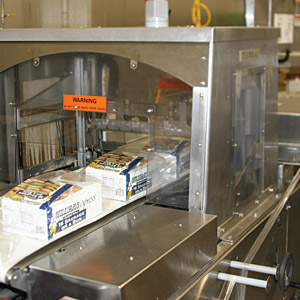 Since 1958, Williams Sausage has produced country-style whole hog breakfast sausage. The company recently added to its product offerings by launching a new line of ready-to-eat breakfast-sausage sandwiches, necessitating the redesign and integration of two of the company’s sandwich-packaging lines. The upgrade centered on a more streamlined and efficient shrink-wrapping capability to process 100% more sandwiches through the new line, while maintaining a zero product-defect rate and maximized uptime.
Since 1958, Williams Sausage has produced country-style whole hog breakfast sausage. The company recently added to its product offerings by launching a new line of ready-to-eat breakfast-sausage sandwiches, necessitating the redesign and integration of two of the company’s sandwich-packaging lines. The upgrade centered on a more streamlined and efficient shrink-wrapping capability to process 100% more sandwiches through the new line, while maintaining a zero product-defect rate and maximized uptime.
The end-of-line packaging process was adequate to keep pace with prior sandwich production demands. But with the addition of the new breakfast sandwiches, the packaging line was no longer able to support the increased throughput required.
“Our production volumes had significantly increased,” said Tommy Ray, plant manager, Williams Sausage. “We needed to double our packaging capability, our throughput of cartons per minute, to keep up with the demand.
“The bottleneck was our shrink-wrapping system,” Ray added. “It was only capable of handling 12 to 14 cartons per minute, but even at this rate we were experiencing line interruptions and delays. We needed to shrink-wrap 24 to 28 cartons per minute to keep the sandwich-manufacturing lines moving.”
Texwrap Packaging Systems, a provider of specialized shrink-wrapping solutions, was brought in to engineer a shrink-wrap system that would address the throughput issues.
“They were having difficulty with downtime on their shrink-wrap system,” said Dan Fredrick, Texwrap. “Aside from maintenance issues caused by heavy throughput volumes, the machine was operating in a cold and damp environment which was having a costly effect on the lines’ operations.”
Texwrap’s solution, its Model 2202 CR continuous-motion side-seal wrapper — a box motion style wrapper — addressed these conditions, incorporating a number of shrink-wrapping technological advancements:
- Motion Trim™ technology, which electronically minimized the motion of the end seal device
- a Speed-Maximizer™ system, which automatically brought the machine up to top speed for any given carton-size setup
- Auto-Spacing™, which separated randomly spaced incoming cartons for wrapping
- a cam-and-spring assembly assisted by compressed air, to rotate the carriage into a soft return, instead of using typical bumpers to provide hard stops for the seal carriage — this improved cycle times by 15 percent
- some of the wrapper’s surfaces were embossed with bumps to minimize belt slippage which can effect registration, and freeze-resistant valves were utilized on its air cylinders to negate the effect of ice buildup
- digital temperature controls, high-velocity fans, and individual top and bottom controls for air direction in the shrink tunnel, to control the right amount of heat to be put in the right places, over the correct amount of time to produce consistent shrink results
“We doubled throughput, running 24 to 28 cartons per minute with no downtime, no product defects, and an efficient ROI,” explained Ray.
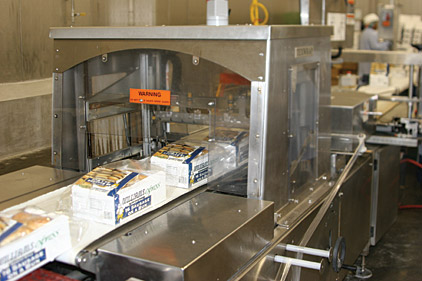
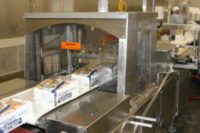
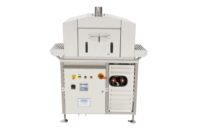
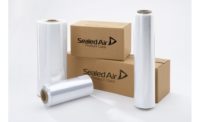
Report Abusive Comment